SUMMARY
This is AI generated summarization, which may have errors. For context, always refer to the full article.
![[Ilonggo Notes] What to eat in Iloilo’s heritage houses](https://www.rappler.com/tachyon/2023/10/heritage-houses.jpg)
There is no doubt that the experience of a meal can be marvelously enhanced (or diminished) by the ambiance of the place itself. The setting, décor, sounds, lighting, scents all add up. The touch of food stylists may be evident in the way food is presented. Dishes, cutlery, napkins, placemats, table cloths, chairs, etc. add up, or subtract. Then there is the matter of service, the look of the menu, among other things that all serve to tantalize the senses, for a truly remarkable and unforgettable experience.
At least 10 of Iloilo’s heritage houses have been refurbished, and two opened their doors to dining only a few months ago. Others may be hired for special events. And for some, you can enjoy the view of the house and grounds while sipping your coffee from an adjacent place. Following is a list of the heritage places in Iloilo City where one may indulge in delicious food. Information sources include the Iloilo City tourism office, and Historical Landmarks and Monuments of Iloilo (Funtecha and Padilla, 1999).
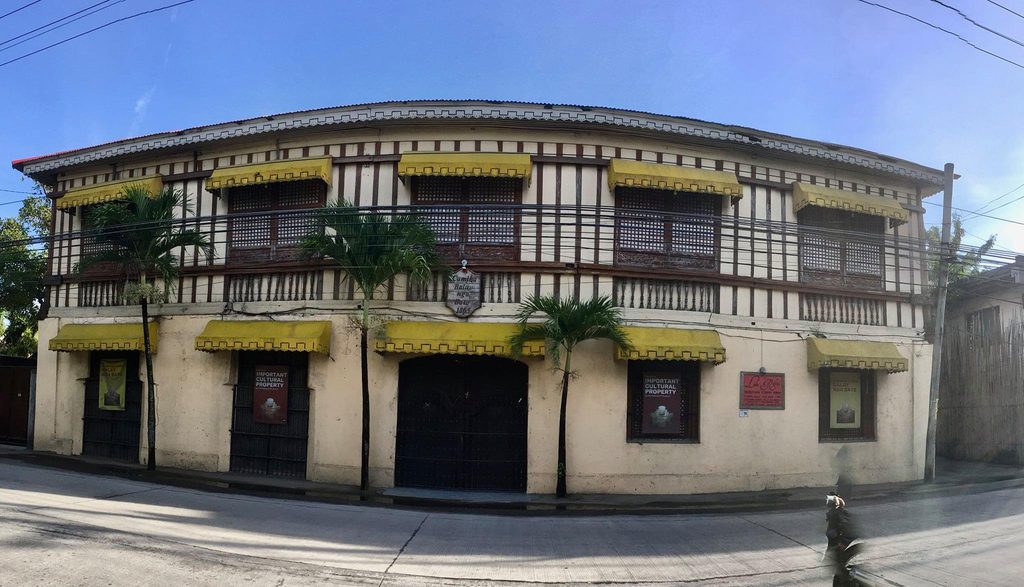
Arevalo district has the Avanceña-Camiña Balay na Bato (1), first built around 1865, and designed by Fr. Anselmo Avanceña, the first Filipino parish priest of Arevalo. It was the home of former Supreme Court Chief Justice Ramon Avanceña, and passed on to fifth generation descendants. The balay na bato is also a lifestyle museum, featuring décor and souvenirs collected from travels in Europe. Start off with an introductory video in the silong then ascend the escalera, a steep staircase. A guide takes you around the sala mayor, the oratorio, and the dining area, where sumptuously thick, warm tsokolate eh and ugoy-ugoy biscuits are served as part of the admission fees. Pancit Molo and a full buffet dinner featuring local Ilonggo cuisine may be ordered in advance. It has a workshop where cacao beans are processed, and a souvenir shop where you can buy the tsokolate tablea and the guava wood batidors. The house was declared an important cultural property by the National Museum in 2015.
Also in Arevalo is the former Sayson-Avanceña Ancestral House, dating from 1927. In 2019 it became the third generation Glory’s Café and restaurant (2), and serves kape barako brewed the native way, in a “sock.” The house was extensively renovated and re-designed; the external facade has been re-created to follow the original form with the solid door, rectangular windows, and faux ventanillas. The café-restaurant warns: “We are not a fast food restaurant, everything is made to order.” While waiting, read about the history of Glory’s Café that started in the Iloilo central market in 1948, admire the industrial-type interiors with the steel-topped tables made from old wood, wrought iron stools, vintage coffee grinders, and roasting vats. Coffee is served in enamel (sartin) cups. They have their own coffee and cacao farm, good pastries, and also serve pasta, sandwiches, and reasonably priced plated meals.
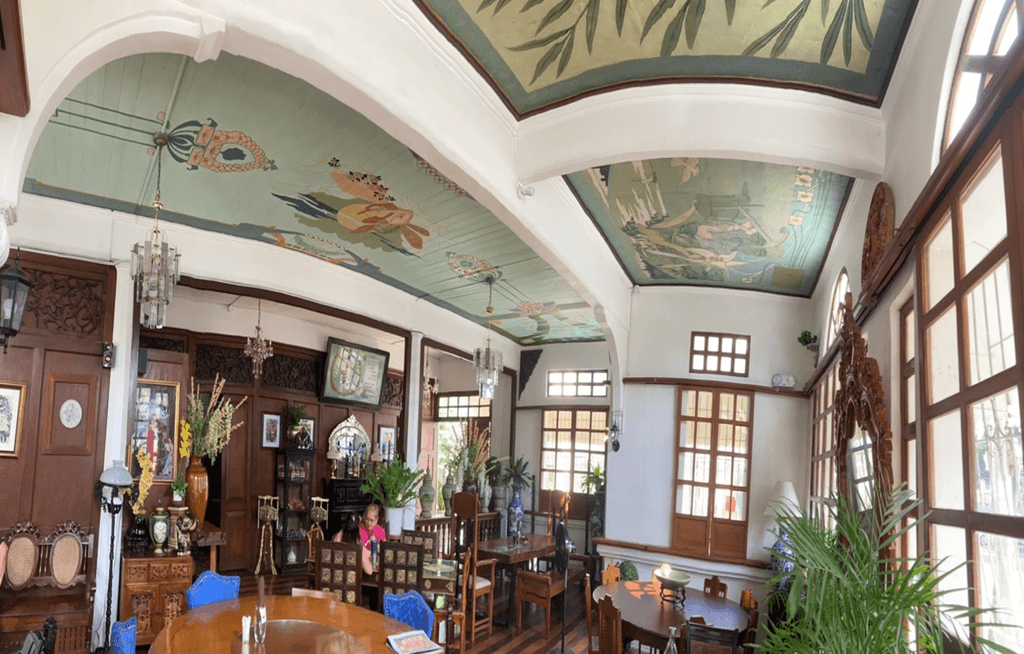
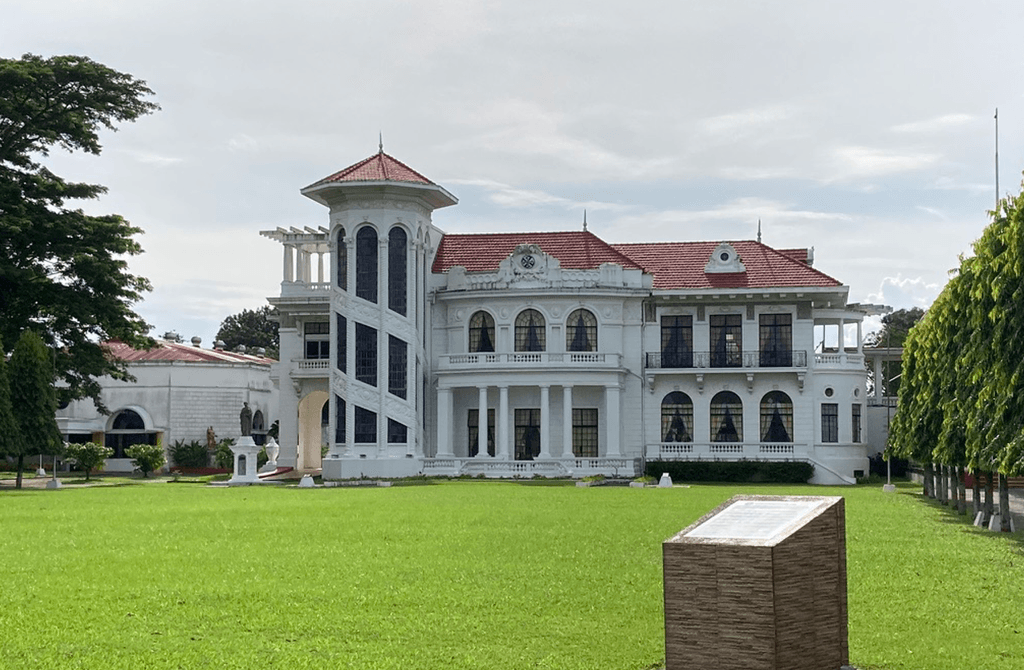
On Mabini Street, just behind the A. Mabini Elementary School, is a neoclassic-style building that was built in 1920 by Dr. Eugenio Kilayko and his wife, Celia Lizares Alunan, of Talisay. The house was purchased after WWII by former Iloilo governor Jose Yulo Regalado and his wife, Doña Maruja Pacheco-Yulo, who added more improvements. It has been passed on to one of their grandchildren and the building has been lovingly restored: look up to see the painted ceilings with European designs, and the calado carvings that divide, yet also add light, to the sala mayor and the dining area. The place opened in June 2023, and is now known as Casa Maruja (3), managed by the Montejo Resto Bar. The lessees have put in a formidable assemblage of orientalia – carved wood tables and chairs of various designs, bought by the Montejo family during trips abroad. There are antique wood and ivory santos, ceramic vases, and a vintage piano. A portrait of the former governor looks down on the visitors from the foyer, declaring “I will serve everyone within the law.” The food is predominantly Filipino cuisine that is unpretentious, flavorful, and reasonably priced – think lauya and laswa. I had their tapsilog one morning; it had a nice side of crisp battered morning glory leaves.
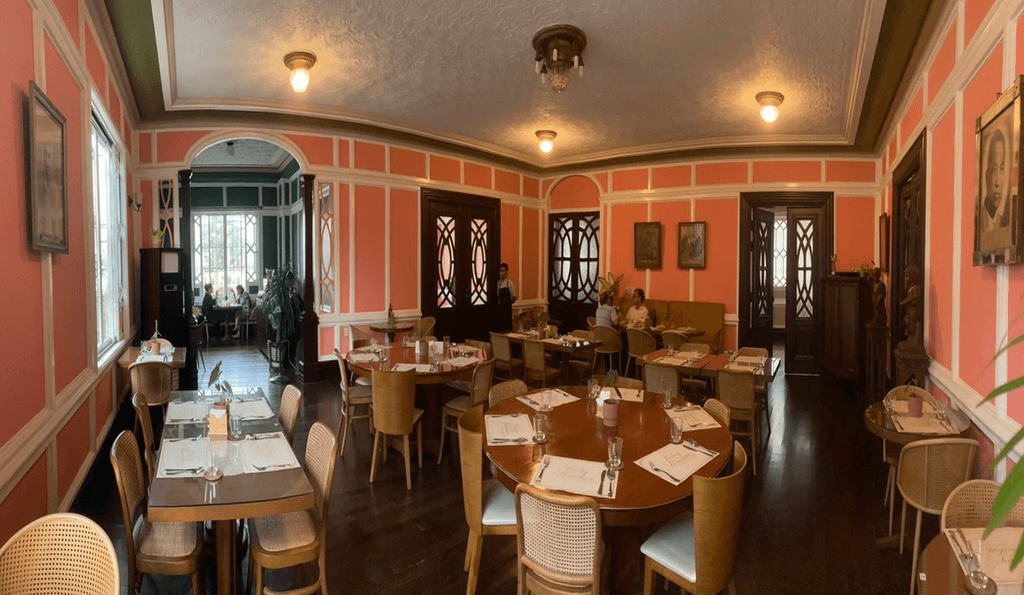
About half a kilometer away, is the newly opened Balay Remedios (4) on Bonifacio Drive. Julio Ledesma had it built in 1928, gifted the house to a Spaniard, who later sold it to Remedios Sian-Villanueva and Eusebio C. Villanueva, who was also the engineer of the house. During the Japanese Occupation the property was vacated and used as an office of the Japanese military, while the basement once served as a torture chamber. Its front gates are reminiscent of art deco, with urns crowning the posts of the fence. The distinctive features on the front include the ornate grills, ventanillas, and the exterior wooden wall panels, which have decorative scrolls inscribed. The pastel rose pink interiors and moldings have been deftly re-painted, and portraits of the Villanueva family adorn the walls. The menu features the creations of Chef Miguel Cordova – classic Filipino, native Ilonggo, and Spanish dishes. Go there hungry as the servings are good for two or three. I tried the pancit pusit, a delightful concoction of squid ink pasta, with seafood, lechon kawali, and green mango slivers.
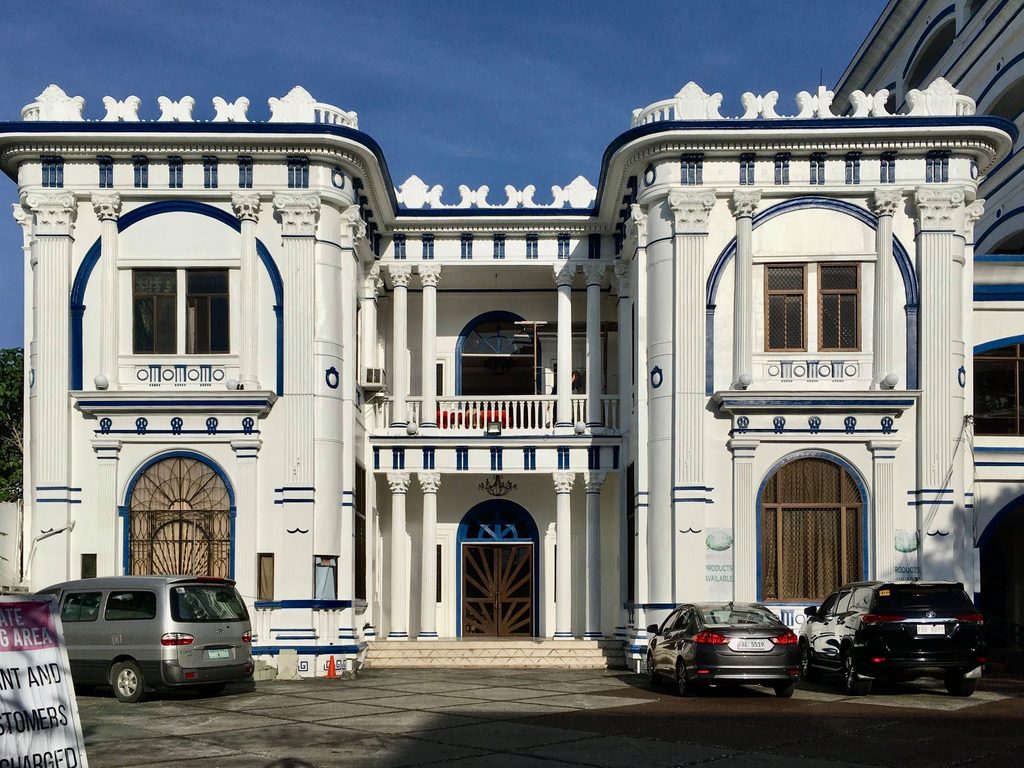
A few steps away from Balay Remedios is the 1930s Juan Ledesma house, now the Castle Chateau Hotel (5). The classical style is prominent, and it remains eye-catching because of its ornamentation on the rooftop, block-like shape, and turret-like structures. Formerly a dull ochre color, it has now been painted white with blue as an accent. Again, it was commandeered by the Japanese military during the occupation and used by the Americans after the Japanese left. It was sold to a Chinese-Ilonggo family in the ’70s and at various times served as a residence, bodega, and a posh massage and sauna. In the ’90s it was converted to a hotel, and a side annex was built. The main house interior has been thoroughly changed and a mezzanine added, with spaces for offices. The main stairway remains and the flooring is now contemporary decorative tiles. One can enjoy a view of the house from a coffee shop on the side annex. In the front yard, now thoroughly cemented over, is the statue of a knight in armor, astride a rearing horse.
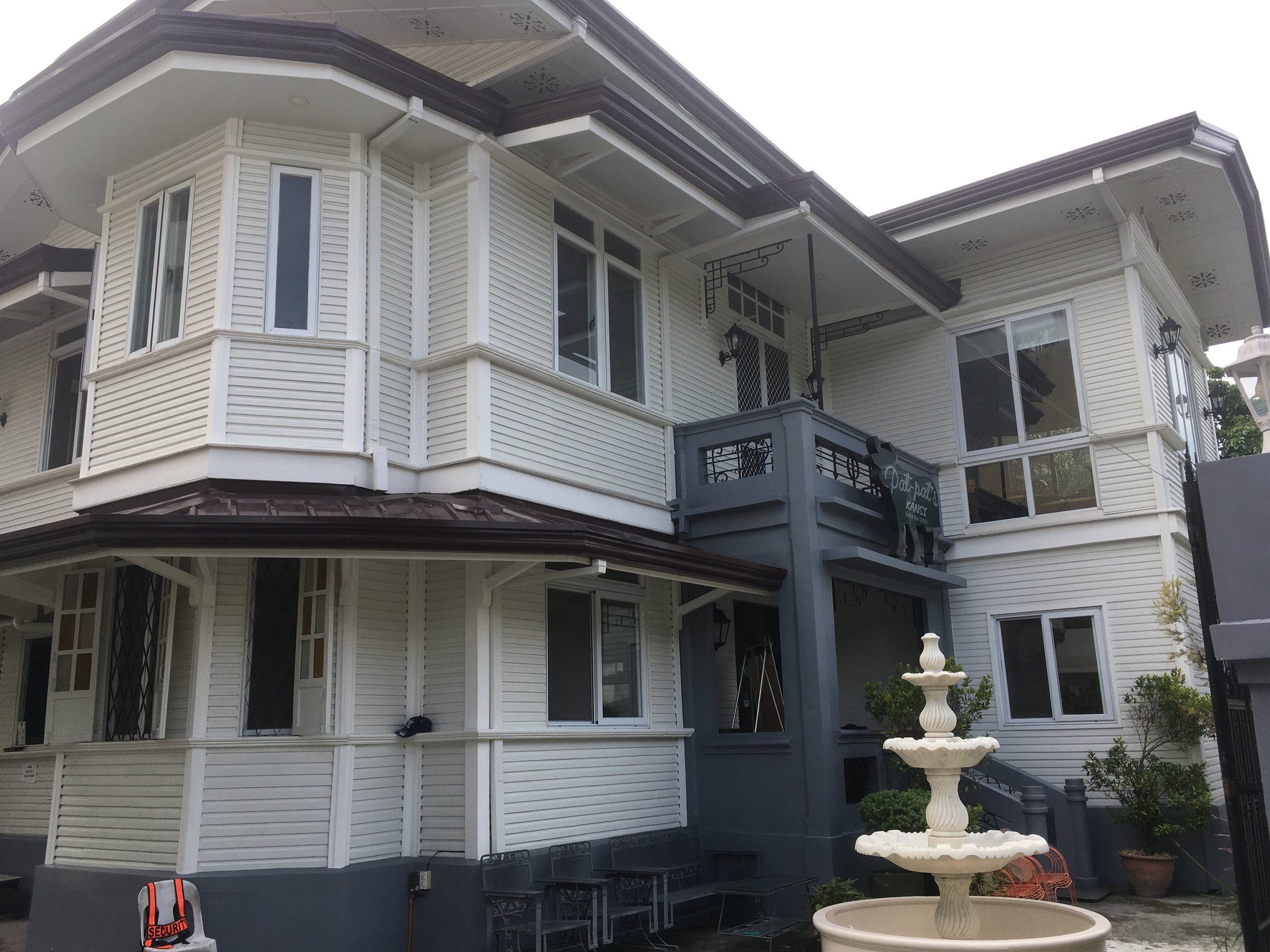
In Jaro, one of the top places to eat for me is Pat-pat’s Kansi House (6). An old house once belonging to Cesar Ledesma and family on Seminario Road has been renovated by the owners, the Servandos, who are originally from Negros. It is right at the back of the sadly crumbling mansion of Don Joaquin Ledesma. Pat-pat’s has been doing kansi for decades and has branches in Makati and Bacolod. The house has been refurbished and the exteriors re-crafted but following the original design. The place bustles with diners who rave over the kansi – an Ilonggo beef dish akin to sinigang, but soured with batwan. One can slurp delicious marrow, cholesterol levels be damned. Their chicken inasal is one of the best; they also sell local snacks like camote and cassava chips and pastillas de leche.
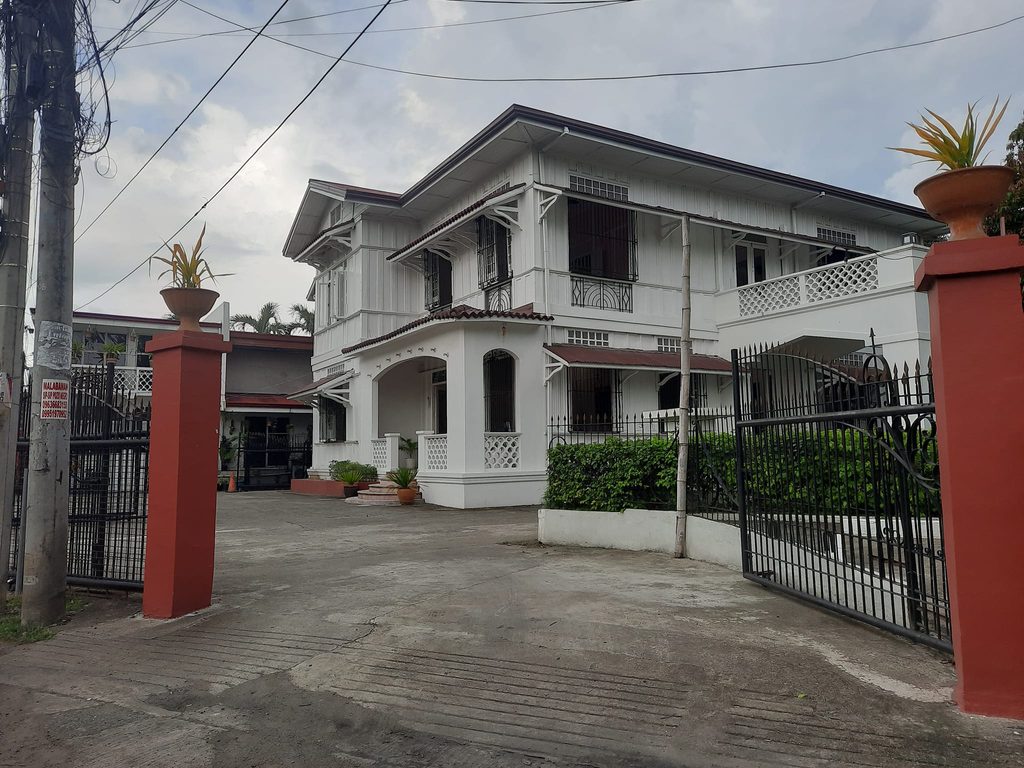
A short walk through the Jaro Plaza, from Patpat’s to Tabuk Suba, but before the bridge, is Balay Sueño (7). The house was built in the 1930s by Modesto Ledesma and purchased several years ago by the Sarabia-Espinosa family. It was then in a state of disrepair and was restored in 2021; one admires the grillwork, the hardwood floors that are of molave and narra, alternating “ebony and ivory” patterns – one sees this flooring often in many heritage houses. The gigantic, home-made cookies and coffee make a superb combination; they also serve sandwiches, pasta, and silog-type meals. The place can be rented out for special events. It has a view of the Jaro belfry tower and the art deco former municipal hall of Jaro. Within the compound, a few steps to the side, former apartments have been converted into an art gallery named Lola Uma that also serves Hong Kong hawker food delights – the Dai Pai Dong Kitchen.
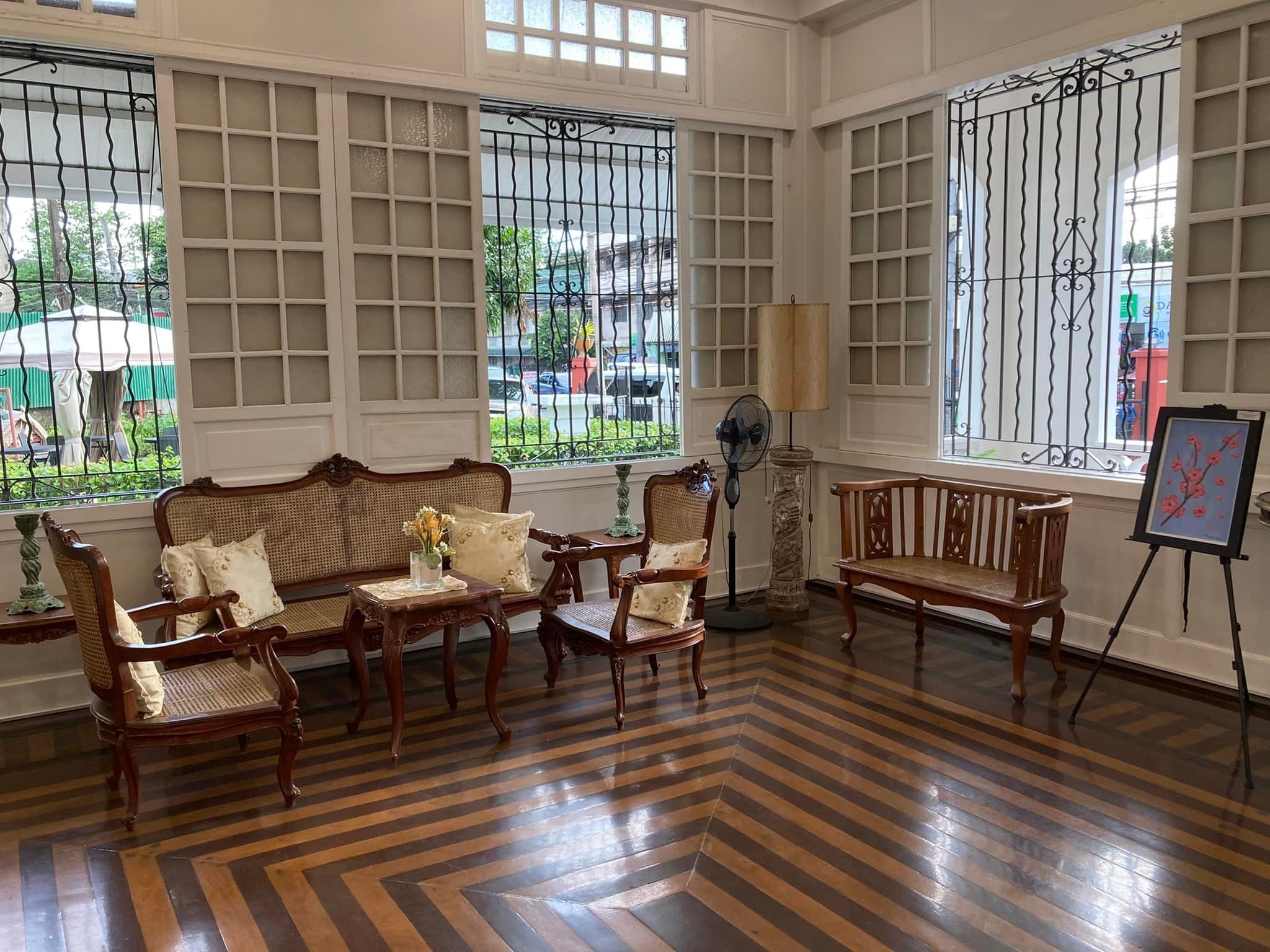
Finally, there are heritage houses that may not serve meals, but whose facades may be enjoyed from a vantage point, and are also open to visitors. These include the Molo Mansion (8), fronting the Molo church. It is a neoclassic-style building, with touches of art deco. The house was built by Estanislao Yusay and Doña Petra Lacson in 1926. It was later inherited by one of their daughters, Rosario, who married a governor of Iloilo, Timoteo Consing. Now owned by SM, it houses a Kultura shop, while on its grounds are several al fresco coffee and snack places.

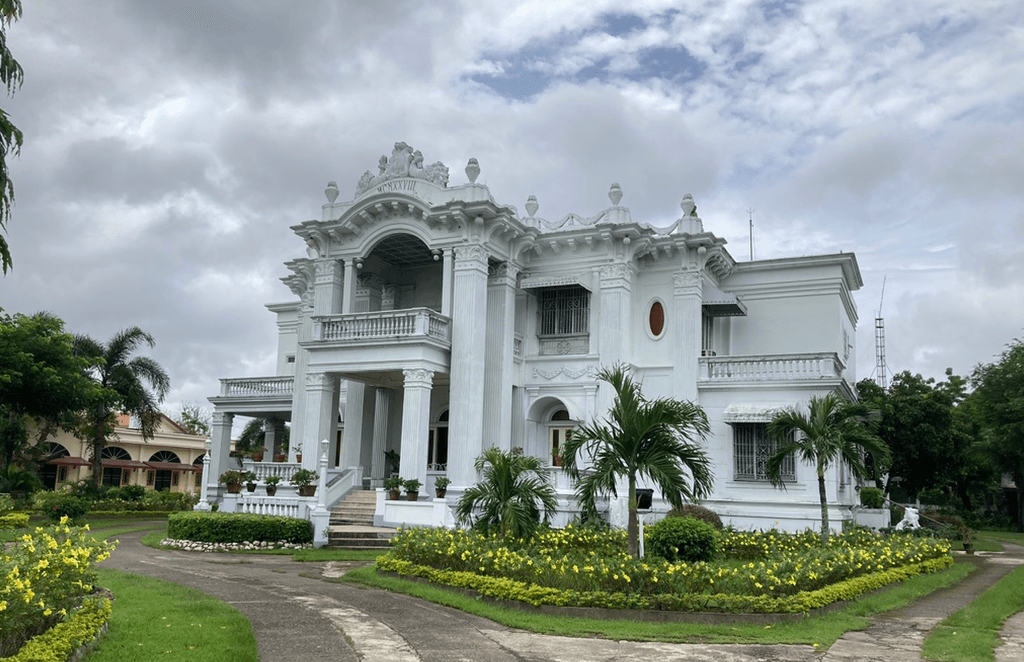
Finally, there are the two grandest mansions of Iloilo City, both in Jaro district. The beaux-arts Lizares mansion (9), designed in 1930 for Don Emiliano Lizares and Doña Conchita Gamboa by Andres Luna de San Pedro, Juan Luna’s son. It has a bloody history during the Japanese Occupation. Set back from the road in a huge estate, the house and grounds were acquired by the Dominican order in the 1960s, and it is now the Angelicum School. The main central area of the house has been converted into a chapel. A coffee shop within the walls of the compound can arrange guided tours. Then there is the Nelly Garden (10), built in 1928 by philanthropist, statesman, and sugar magnate Don Vicente Lopez and his wife, Doña Elena Hofileña. They named the house after their eldest daughter. Engineer Mariano Salas designed the palatial residence – classical Corinthian with touches of art deco. The edifice is constructed of reinforced concrete; interiors are of Philippine hardwood. It has a long oval driveway, with two cannons installed in front of the house. Presidents, heads of state, and royalty have wined and dined there, and you can, too – it can be rented for events, with caterers of your choice.
The combination of heritage settings and Ilonggo cuisine further adds to the city’s credentials as a UNESCO City of Gastronomy! – Rappler.com
#ShareAsia highlights the best and most sought-after experiences in the Asia-Pacific region. It’s a content and resource hub for tourists and locals alike seeking new, exciting experiences in the region.
Add a comment
How does this make you feel?











![[Ilonggo Notes] Exploring Plaza Libertad, Iloilo’s first town square](https://www.rappler.com/tachyon/2024/07/plaza-libertad-guimaras-from-city-hall.jpg?resize=257%2C257&crop=574px%2C0px%2C640px%2C640px)


![[OPINION] Poverty is not a hindrance to success – that is a lie](https://www.rappler.com/tachyon/2024/06/Poverty-is-not-a-hindrance-to-success-%E2%80%93-that-is-a-lie-june-10-2024.jpg?resize=257%2C257&crop_strategy=attention)
There are no comments yet. Add your comment to start the conversation.